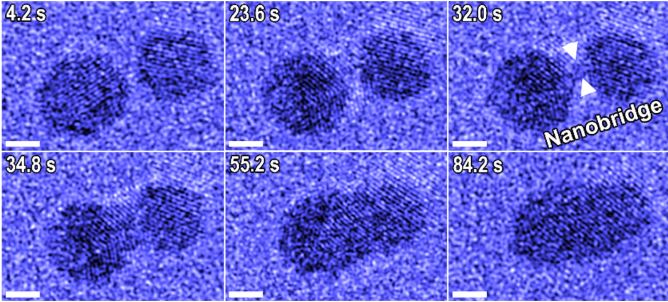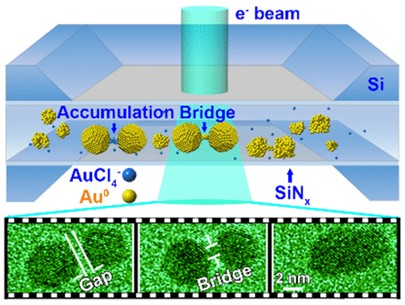A collaborative research effort from Zhejiang University and Pacific Northwest National Laboratory has demonstrated that the formation of hydration layer or so-called “nanobridge” is critical for two independent Au nanocrystals to coalesce into a single nanocrystal. The results observed using Hummingbird Scientific’s liquid cell platform is published in prestigious Nano Letters.

For particles to coalesce in aqueous solution, some form of initial contact in required. The researchers used liquid cell TEM platform to observe the dynamics of Au nanocrystals in aqueous solution and found that as two adjacent Au nanocrystals coalesce, they form a hydration layer (or nanobridge) with a separation of ~0.5 nm. Both experimental and theoretical evidence suggested that precursor ions, in this case gold chloride anions, saturate and accumulate in the gap region, forming a connecting links between the particles. This result can be useful is studying the synthesis mechanism of several other nanoparticles as the building blocks.
Reference: Biao Jin, Maria L. Sushko, Zhaoming Liu, Chuanhong Jin, and Ruikang Tang. “In Situ Liquid Cell TEM Reveals Bridge-Induced Contact and Fusion of Au Nanocrystals in Aqueous Solution,” Nano Letters (2018). DOI: 10.1021/acs.nanolett.8b03139
View All News

